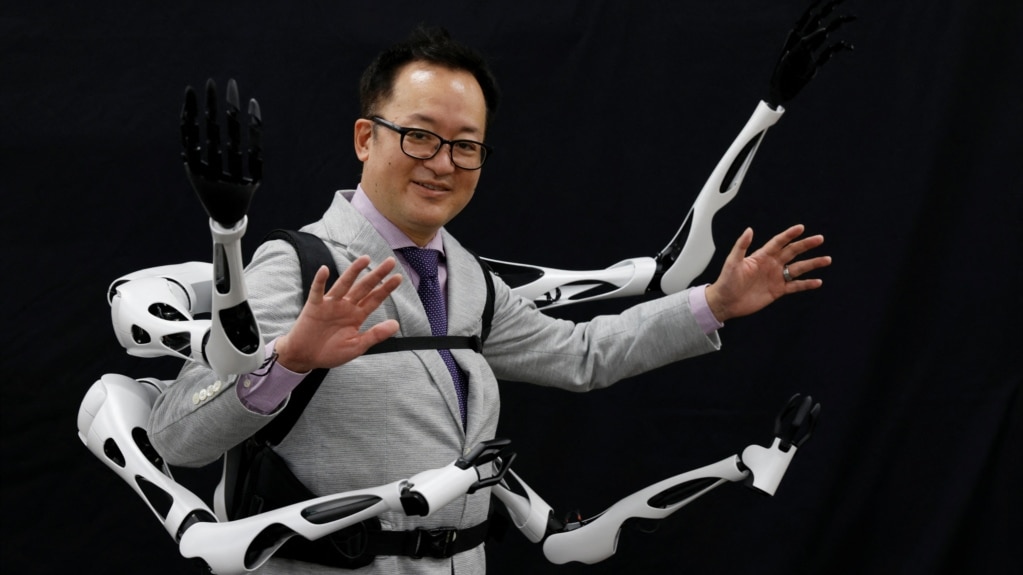A team at Tokyo University is developing robotic arms that people can wear. The devices could find use in areas from creative expression to search and rescue operations.
Masahiko Inami is a professor who develops systems to expand human abilities. Inami’s team at the University of Tokyo is designing the wearable robotic arms.
The team is developing a series of technologies rooted in the idea of “jizai.” It is a Japanese idea that he says roughly means the autonomy and the freedom to do as one wants.
The aim is to create something like the relationship between a musician and an instrument. Inami said, “Lying somewhere between a human and a tool, like how a musical instrument can become as if a part of your body.”
Inami says the idea came to him when he thought of traditional Japanese puppetry and a short story by Yasunari Kawabata. The story is about a young man who borrows a young woman’s right arm.
Inami said the robotic device is “not a rival to human beings, but rather something that helps us do as we please.” He added that it was “like a bicycle or e-bike. It supports us and can unlock creativity."
A video called JIZAI ARMS shows two dancers performing with the robotic arms on their backs. The humans and machines move together in the performance. The dancers come together and move in similar ways either leading or following the robot arms.
Inami said some wearers grow attached to the arms after some time. "Taking them off after using them for a while feels a little sad. That's where they're a little different to other tools," he said.
But Inami added that the possibilities for the robot arms go beyond turning a short story into real life. He said such machines could help in search and rescue operations.
He wondered if similar devices could be used to fly or perform sports in the future.
"In the future we might see wings growing out of people's backs, or drones attached to people...Maybe someone will come up with a sport that requires six arms or invent a new type of swimming," Inami said.
I’m Jill Robbins.

